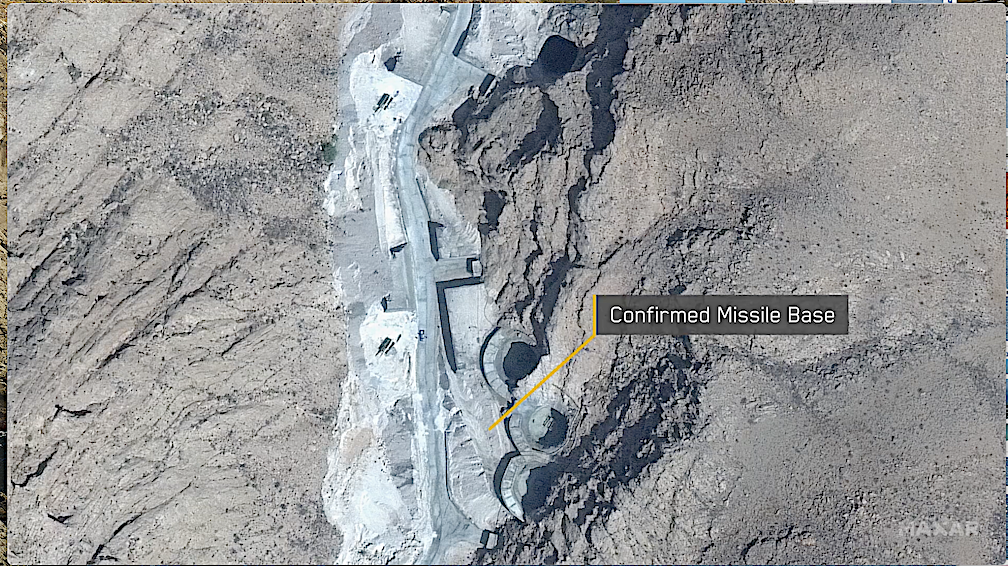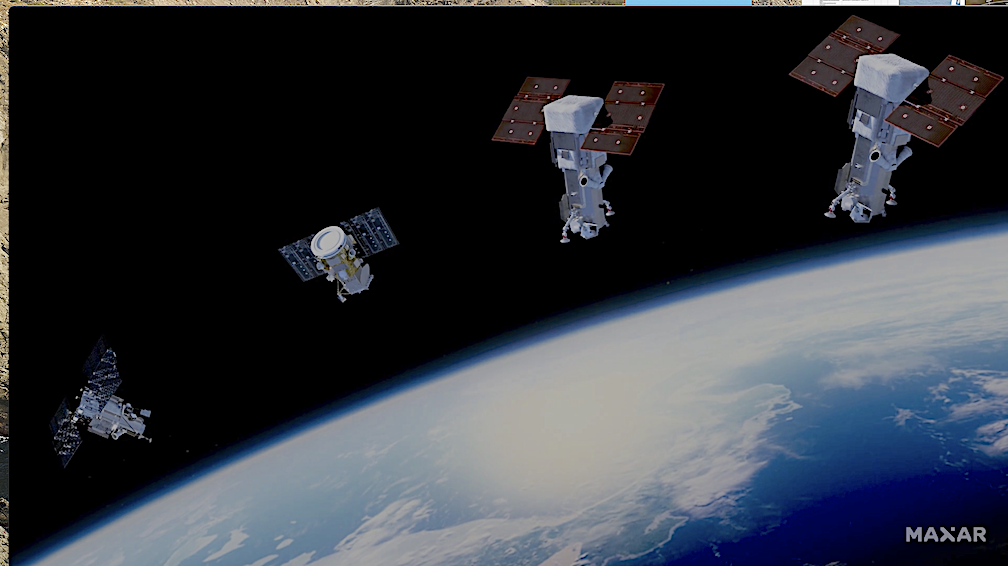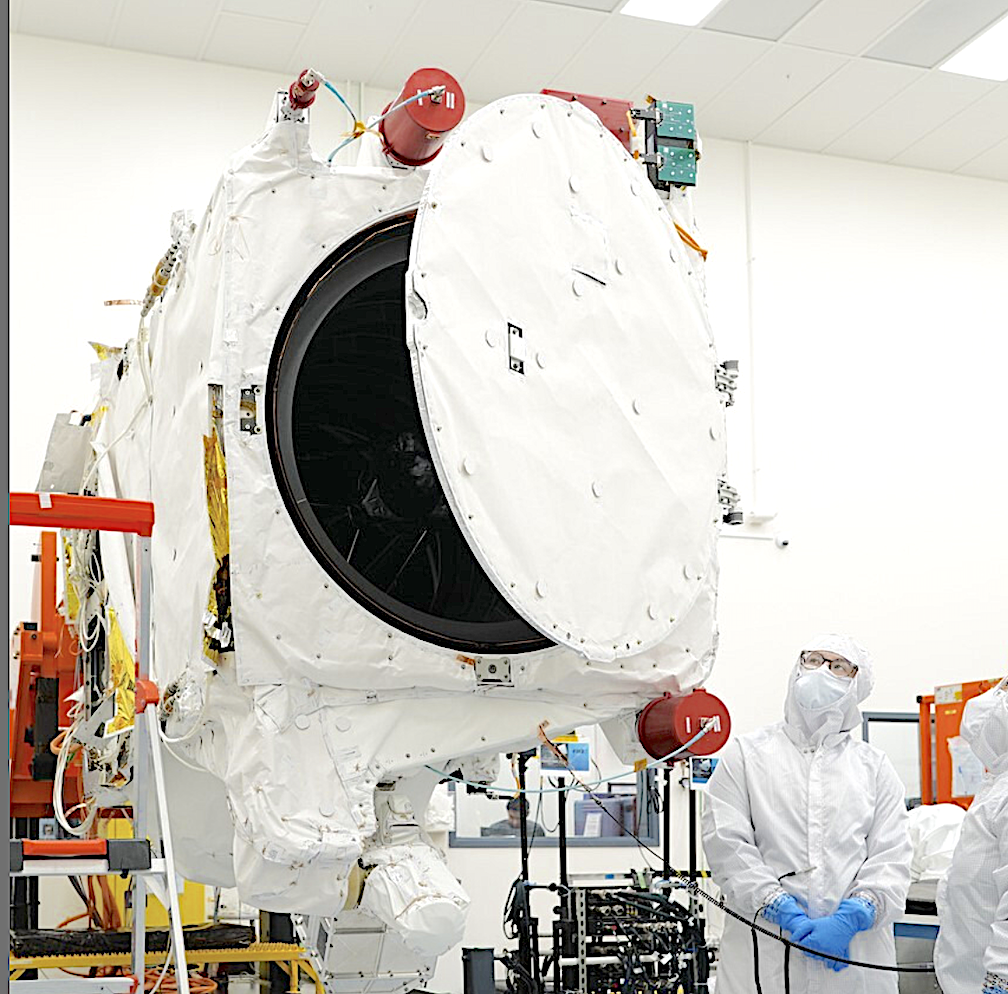
Reports indicate that SpaceX may launch Maxar’s Worldview Legion 1 & 2 mission on May 1 from Vandenberg SFB, California at 11:30 AM – 12:24 PM PDT. Prior to this there were several postponements of the launch.
The telescopes are intended to replace the capacities of the WorldView-1, WorldView-2, and GeoEye-1 satellites. SSL (formerly Space Systems/Loral), a subsidiary of Maxar, is building the satellites. Raytheon, a subsidiary of RTX Corporation, will provide the cameras.

The satellites will be able to record panchromatic resolutions of up to 0.29 meters. Images with resolutions of up to 1.16 m should be possible on a multispectral level. The satellites can photograph the exact locations up to 40 times a day. A total of two satellites will operate in a polar orbit and four satellites in a sun-synchronous orbit.
Space Launch Complex 4E has witnessed the launch of 141 rockets, including 141 orbital launch attempts, while Vandenberg SFB, CA, USA, has been the site for 752 rocket launches.
SpaceX launch of Maxar’s WorldView Legion mission a No-Go

The WorldView Legion mission was postponed the day before launch and, with support ship Go Beyond now returned to the Port of Long Beach and the listing removed from the FAA Operations Plan Advisory, could be delayed for some time.
The booster, which had yet to be confirmed, was expected to return to land on the pad at Landing Zone 4 located around 400 meters away from the launch mount.
After stage separation, the Falcon 9 booster will make a land landing (land-to-land-landing) at the Landing Zone 4 (LZ-4) at the Vandenberg Space Force Base. WorldView Legion is a planned series of high-resolution earth observation satellites from the US company Maxar Technologies.

We developed a new telescope for the WorldView Legion satellites in partnership with Raytheon. The telescopes collect the high-quality images that customers have come to expect from us, but the telescope is smaller and requires less power.
They are intended to replace the capacities of the WorldView-1, WorldView-2, and GeoEye-1 satellites. SSL (formerly Space Systems/Loral), a subsidiary of Maxar, is building the satellites. Raytheon, a subsidiary of RTX Corporation, will provide the cameras.
The satellites will be able to record panchromatic resolutions of up to 0.29 meters. Images with resolutions of up to 1.16 m should be possible on a multispectral level. The satellites can photograph the exact locations up to 40 times a day. A total of two satellites will operate in a polar orbit and four satellites in a sun-synchronous orbit.
A Falcon 9 was originally scheduled to launch from SLC-4E at Vandenberg Space Force Base on Wednesday, April 17, at 11:30 AM PDT (18:30 UTC), taking two satellites massing a total of 1,500 kilograms into a Sun-synchronous orbit.
SpaceX to launch Maxar WorldView Legion 1 & 2 mission for leading resolution and accuracy

A SpaceX Falcon 9 rocket will launch the WorldView Legion 1 & 2 mission on Wednesday, April 17, 2024 at 6:30 PM (UTC). WorldView Legion is a constellation of Earth observation satellites built and operated by Maxar. Constellation is planned to consist of 6 satellites in both polar and mid-inclination orbits, providing 30 cm-class resolution.
These are the first two of six planned WorldView Legion satellites, which will enhance Maxar Intelligence’s constellation by delivering industry-leading resolution and accuracy. When all six WorldView Legion satellites are launched, it will triple Maxar Intelligence’s capacity to collect 30 cm-class and multispectral imagery. The full Maxar constellation of 10 electro-optical satellites will image the most rapidly changing areas on Earth as frequently as every 20 to 30 minutes, from sunup to sundown.
“WorldView Legion will extend the quality and capability of our industry-leading constellation, redefining Earth observation constellation performance and providing customers with unprecedented access to timely, actionable insights that help drive mission success,” said Dan Smoot, Maxar Intelligence CEO.

These Maxar Space Systems-built satellites are the first Maxar 500™ series buses to complete production at the company’s satellite manufacturing locations in Palo Alto and San Jose, California. The Maxar 500 series bus is a mid-size platform that can be tailored for multiple missions and orbits. As part of the WorldView Legion program, Maxar invested to create a bus with better stability, agility and pointing accuracy; future Maxar 500 customers can benefit from this technology for their missions.

“WorldView Legion and the Maxar 500 series platform is the culmination of decades of experience in building satellites for customer missions,” said Chris Johnson, Maxar Space Systems CEO. “We are excited to reach this important program milestone and look forward to continued partnership on the program.”
The launch of the first two WorldView Legion satellites will be broadcast on spacex.com and on x.com/spacex.
Space Launch Complex 4E has witnessed the launch of 141 rockets, including 141 orbital launch attempts, while Vandenberg SFB, California, has been the site for 752 rocket launches. The launch cost is $52 Million.
